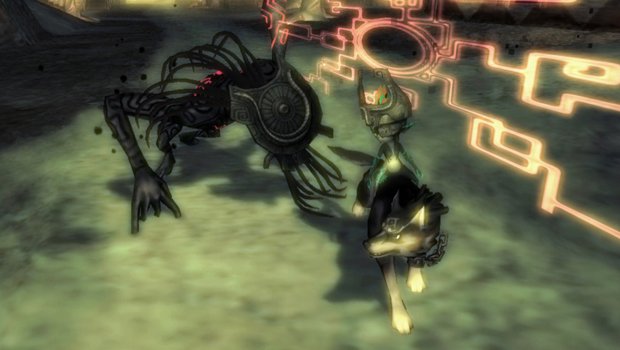Why The Legend of Zelda: Twilight Princess is one of the greatest games ever made
Nintendo delivers on a dark Zelda
Twilight Princess definitely didn't skimp on the dungeons in Link's mature adventure, either. The monkey-infested Forest Temple, lava-filled Goron Mine, and the waterlogged Lakebed Temple gave new life to the fire/water/forest themed dungeons we'd seen in previous games. None of the dungeons felt like the typical Zelda labyrinths. You'd explore a city in the sky with complicated indoor puzzles and treacherous outdoor pitfalls, or help a yeti get his sick wife some soup in a frozen mountainside mansion. Not standard for a Zelda title, but the diverse locations made the dungeons even more engaging and made each feel like they were a legitimate part of the world. Every environment was exciting to explore, presented challenging puzzles, and were guarded by even more impressive bosses. These were Zelda dungeons at their best.

Outside the dungeons, the environments in Twilight Princess were equally as impressive. Hyrule Castle Town's bustling center made the world feel alive. Peasant folk wandered about the town according to the changing day/night cycle. You could spend hours just hanging out in town, picking up cats, shopping, talking to NPCs, and playing carnival games. Best of all, you were rewarded for your curiosity, as talking to all the locals helps you acquire new quests--which often lead to interesting characters, like the somewhat mentally unstable bug collector Agitha.
Even with the immersive, sprawling world, Twilight Princess's characters never took a backseat. Link's relationship with his Twili companion Midna was one of the series' most interesting partnerships. At first, Link wasn't sure whose side the gremlin-like, magical creature is on. Her tricky nature and the fact that she treats him like a pet (in wolf form), made us distrust her at first. But as the two's relationship grew throughout the game, we sympathized and truly began to care about Midna's story and struggles. Then there was all of the members of the Resistance, the disturbingly odd Ooccoo, and the creepy, power hungry Zant. Even Zelda herself took on a different role, playing the concerned leader rather than the damsel in distress.

When Zelda fans' craving for a more mature and darker adventure was not sated by Wind Waker's cartoony, cel-shaded visuals, Twilight Princess's child kidnappings, brutal execution scene, bestial transformations, and alternate world living in perpetual twilight gave gamers what they asked for. Link was no longer a green garbed, little kid swinging a sword at Octorocks--he was a fully-grown adult and legendary hero. But Twilight Princess was not only successful as a dark themed Zelda; it differentiated itself from its predecessors with its list of memorable characters, the massive, living world, and some of the most unique and entertaining dungeons in the series. Every aspect of Twilight Princess was done right, and deserves recognition as one of the greatest games ever made.
Sign up to the GamesRadar+ Newsletter
Weekly digests, tales from the communities you love, and more
Many years ago, Lorenzo Veloria was a Senior Editor here at GamesRadar+ helping to shape content strategy. Since then, Lorenzo has shifted his attention to Future Plc's broader video game portfolio, working as a Senior Brand Marketing Manager to oversee the development of advertising pitches and marketing strategies for the department. He might not have all that much time to write about games anymore, but he's still focused on making sure the latest and greatest end up in front of your eyes one way or another.



